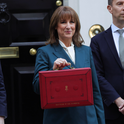The minimum wage and its successor the National Living Wage—introduced in 2016—have been a significant intervention in the labour market. So far they have successfully satisfied the Low Pay Commission’s remit of raising pay without causing unemployment. Indeed, employment is at or near historic high levels. This has been delivered under the guidance of commissioners representing business, the unions and independent academics, who offer advice to the government on rates.
Before the NLW was introduced about a million people were paid the minimum wage. Under the NLW—which sets the minimum for over 25s—this has risen to 1.6m. However, in our 2018 report published at the end of November we estimate that, including the “spillover effect,” around five million workers benefited from the NLW increase to £7.83 in 2018. This indirect impact occurs when employers are compelled to adjust slightly higher rates to maintain job grade differentials or position themselves in the market as paying just above the minimum wage.
These numbers illustrate what a significant change the NLW has been for those on low pay as over the years they have seen increases well in excess of changes to average wage rates. This is particularly felt in the poorer regions of the UK where the impact is disproportionately large, and on women who regrettably continue to be more likely than men to be paid the minimum wage.
For workers the outcome is a welcome pay rise but we have consistently heard from businesses that increases in the minimum wage are difficult to manage, particularly for small employers when taken together with other cost pressures and the long-running political uncertainties surrounding the Brexit debate.
Employers have responded to increases by accepting lower profits, increasing prices where possible and restructuring workforces, often narrowing pay band differentials. They have been aided in managing this process by the broad predictability of the progression towards the government’s target of 60 per cent of the average wage by 2020. Notwithstanding the above some sectors undoubtedly find the development very challenging. The care sector, retail, textiles and hairdressing are examples. Although most welcome the improved living standards for their employees, the increases are difficult to absorb.
The obvious and desirable way to address these issues is by an increase in productivity on a sustainable basis. Worryingly our various consultations have found little evidence of real improvements and the UK still lags behind almost all other western economies, with no indications of the gap closing. According to feedback from both employers and workers, efforts to raise productivity have too often centred on work practices rather than investment in capital and training. Skills training is frequently inadequate.
Unions often argue that the absence of job losses and the apparent ability of employers to cope with increases demonstrates that the minimum wage can be pushed higher without causing unemployment, which has been so damaging in other parts of Europe. The Commission will continue to use evidence to achieve a balanced approach.
We are also paying particular attention to concerns elsewhere, for example in the agricultural sector, where the recent devaluation of sterling has made it more difficult to compete for seasonal foreign labour.
Unions also have concerns about insecure work and unpredictable hours, and the growth of the gig economy. We are assisting the government in this area and have recently published our recommendations on what the “Taylor Review” identified as “one-sided flexibility.” The Commission unanimously agreed to recommend a package of measures to tackle this issue, and the government will be consulting on the measures we identified. We set out analysis of the “one-sided flexibility” problem, using evidence from businesses and unions, and looking at labour market data.
We recommended that the government give workers a right to a contract with guaranteed hours that reflect their actual hours, compensation when shifts are cancelled or curtailed, reasonable notice of work schedules and clear information for workers with these rights.
The NLW, meanwhile, will continue to rise. The government accepted the recommendations we made in October to increase the rate to £8.21 per hour in April 2019, thereby staying on track to meet 60 per cent of median earnings in 2020 subject to sustained growth. The current view is that this is likely to be around £8.60.
As always, we will weigh the evidence carefully before proceeding, looking especially for any adverse effect on jobs. As one former commissioner puts it “we are driving the minimum wage looking in the rear-view mirror, hoping nothing jumps out in front of us.” The evidence we have is mainly retrospective but is what we must use to plot where we are going.
Minimum wage hikes: a question of balance
The Chair of the Low Pay Commission says the least well-off have seen their lot improve, but some businesses struggle to manage wage increases
December 22, 2018

Stefan Rousseau/PA Archive/PA Images











